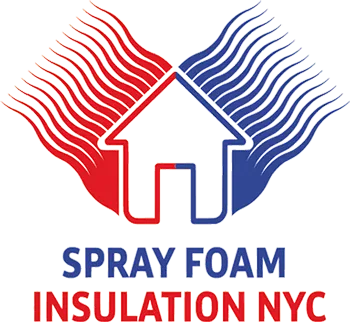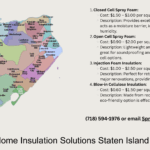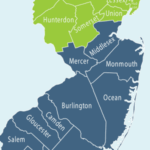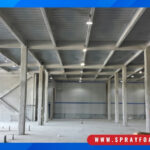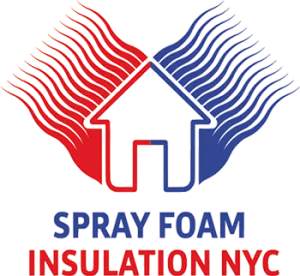The Impact of Spray Foam Insulation on NYC’s Urban Heat Island Effect
Urban environments like New York City come with unique challenges, one of which is the urban heat island (UHI) effect. The term describes how cities become significantly warmer than their surrounding rural areas due to human activities, infrastructure, and dense populations. This increased temperature doesn’t just make summers more uncomfortable; it exacerbates energy demands, escalates greenhouse gas emissions, and worsens public health risks.
But there’s hope. A seemingly small innovation like spray foam insulation could play a meaningful role in lessening the UHI effect. By enhancing energy efficiency and cutting down the need for excessive air conditioning, spray foam insulation offers practical benefits that could help NYC become a more sustainable and livable place.

What Is the Urban Heat Island Effect, and Why Does It Matter?
The urban heat island effect occurs when cities trap heat due to the prevalence of concrete, asphalt, and other heat-absorbing materials. Unlike rural areas where vegetation and soil promote cooling, urban landscapes retain heat during the day and release it slowly at night. This cycle leads to consistently higher temperatures in urban centers, especially during warmer months.
For a city like New York, where skyscrapers and paved surfaces dominate, the UHI effect is especially pronounced. According to studies, NYC can be up to 7°F warmer than surrounding areas on hot summer days. This heat differential puts strain on residents, businesses, and the environment.
The Consequences of NYC’s UHI Effect
The UHI effect poses serious challenges for New York’s 8.5 million residents. Some key consequences include:
- Higher energy consumption: Air conditioning becomes a necessity rather than a luxury. This increases electricity demand, straining the energy grid during peak periods.
- Escalated greenhouse gas emissions: Elevated energy use leads to higher carbon emissions, contributing to climate change.
- Public health concerns: Heatwaves in NYC lead to hundreds of heat-related emergencies each year, disproportionately affecting vulnerable communities like the elderly and those without adequate cooling systems.
- Degraded air quality: Warmer temperatures accelerate the formation of ground-level ozone, worsening air pollution and respiratory problems.
Addressing these challenges requires innovative solutions that promote urban sustainability—and this is where spray foam insulation enters the picture.
Spray Foam Insulation and Its Energy Efficiency Benefits
Spray foam insulation is a versatile, high-performance material that seals building envelopes, preventing air leaks and improving temperature regulation. Unlike traditional insulation materials like fiberglass, spray foam expands to fill gaps, ensuring a near-perfect seal. This airtight nature delivers several energy-related benefits:
Minimized Heat Transfer
During NYC’s blistering summers, spray foam insulation ensures that less outdoor heat seeps into interiors. This keeps indoor spaces naturally cooler and reduces the need for constant air conditioning.Lower Energy Bills
Because spray foam creates an effective thermal barrier, HVAC systems don’t need to work as hard to maintain comfortable temperatures. According to the U.S. Department of Energy, homeowners can save up to 20% on energy costs by properly insulating their homes.Reduced Cooling Demands
When entire buildings operate at peak efficiency, the city’s overall energy load decreases. This reduces strain on the power grid and limits the use of fossil fuels to generate electricity.
By optimizing structures for energy efficiency, spray foam insulation can be a key player in mitigating NYC’s UHI effect.
How Spray Foam Insulation Contributes to Combating UHI
Insulation doesn’t just keep indoor temperatures stable; it can help reshape how urban areas interact with heat. Here’s how spray foam insulation fits into the larger effort to combat UHI effects:
1. Decreasing Energy Usage and Lowering Heat Output
Cities experiencing the UHI effect often create a feedback loop of heat generation. Buildings absorb solar radiation, which increases cooling demands. HVAC systems then expel heated air outdoors, intensifying the problem. Spray foam insulation disrupts this cycle by cutting energy needs at the source.
For instance, when an NYC apartment building upgrades its insulation, it reduces its reliance on air conditioning. This lower energy consumption means that less waste heat is ejected into the environment, shrinking the building’s contribution to the UHI effect.
2. Encouraging Green Construction and Retrofitting
Spray foam insulation aligns with NYC’s goals for sustainable architecture. Programs like Local Law 97, which mandates large buildings to reduce their emissions, make high-performance insulation a necessity. By retrofitting older buildings with spray foam, landlords can cut emissions and meet legal requirements while offering tenants more comfortable living environments.
3. Promoting Healthier Indoor Environments
Spray foam insulation does more than regulate temperature; it also minimizes drafts, reduces indoor allergens, and helps prevent mold. For NYC residents, where dense population can make escaping outdoor heat challenging, having a healthy, cool home to retreat to can be life-changing.
4. Scaling Impact Across NYC
Adopting spray foam on a larger scale could bring wider benefits. If city planners prioritize insulation upgrades in both commercial and residential sectors, NYC could see a measurable decrease in urban temperatures over time. Estimates suggest that addressing the energy efficiency of buildings citywide could reduce cooling-related emissions by 20% or more.
NYC’s Path Forward in Fighting UHI
While spray foam insulation is a powerful tool in the fight against the UHI effect, it works best when paired with other interventions. Green roofs, reflective surfaces, and urban forestry programs complement the insulation improvements by further reducing heat absorption and improving air quality. Together, these strategies create a more comprehensive solution to NYC’s warming challenges.
A Call To Action for Building Owners and Policymakers
If you’re a property owner in NYC, investing in spray foam insulation isn’t just about savings; it’s about contributing to a sustainable future. For policymakers, incentivizing such upgrades through rebates and grants could accelerate adoption across the city’s five boroughs.
Conclusion
The fight against NYC’s urban heat island effect requires bold action, and spray foam insulation is a practical, cost-effective solution that can make a difference. By reducing energy demands and lowering heat output, this innovative material tackles the problem at its roots. Whether part of a new development or a retrofit for older buildings, spray foam insulation offers an immediate way to cool the city, cut emissions, and create a more comfortable future for its residents. After all, in a concrete jungle like New York, finding clever ways to beat the heat is not just smart; it’s essential.
